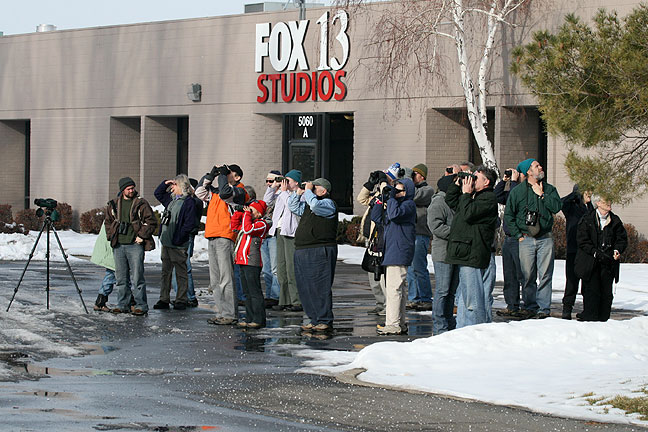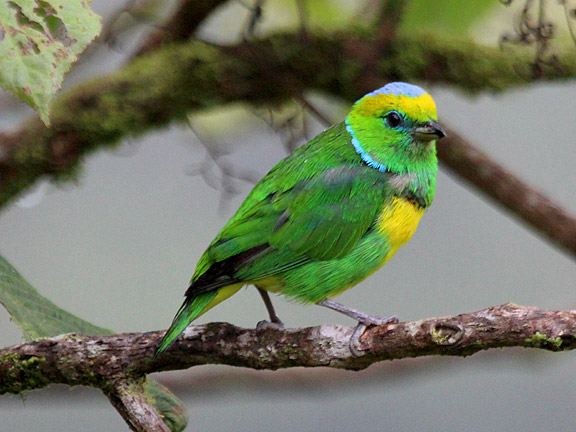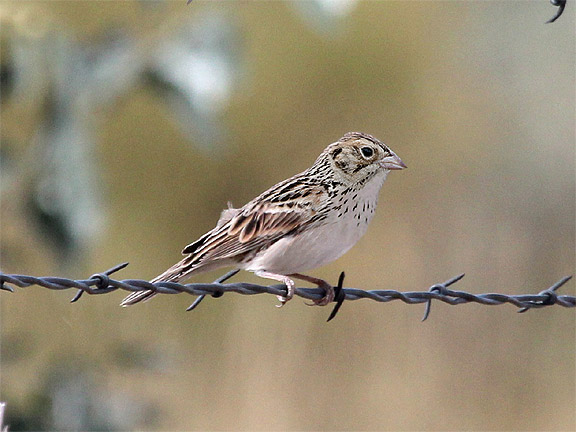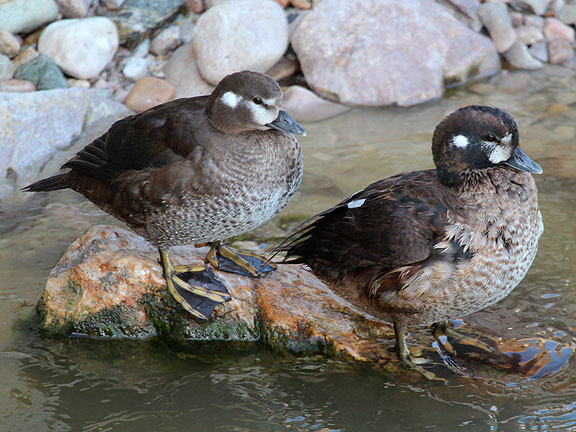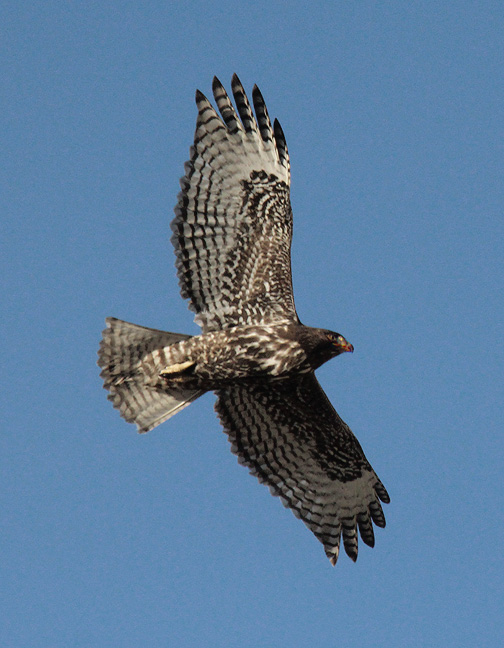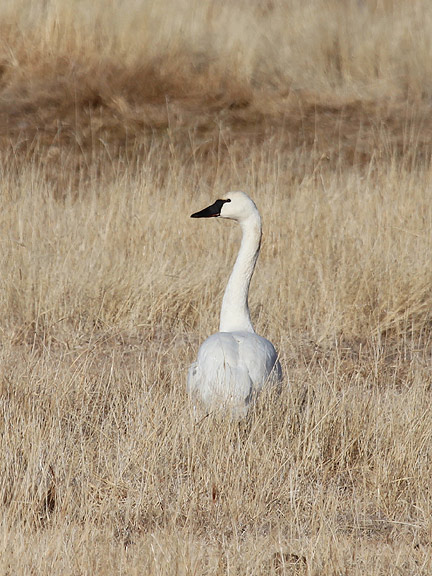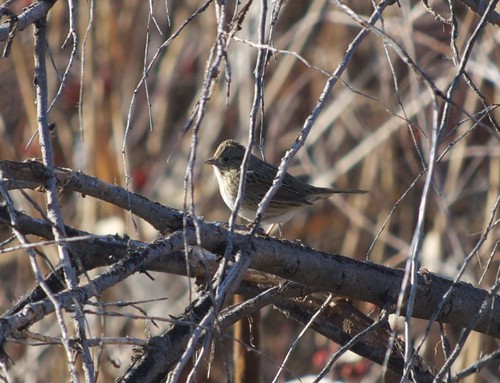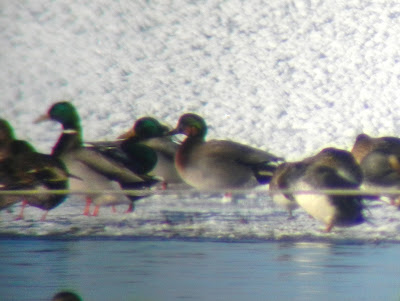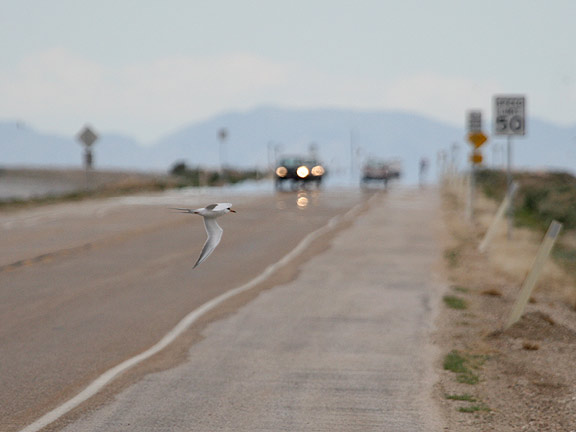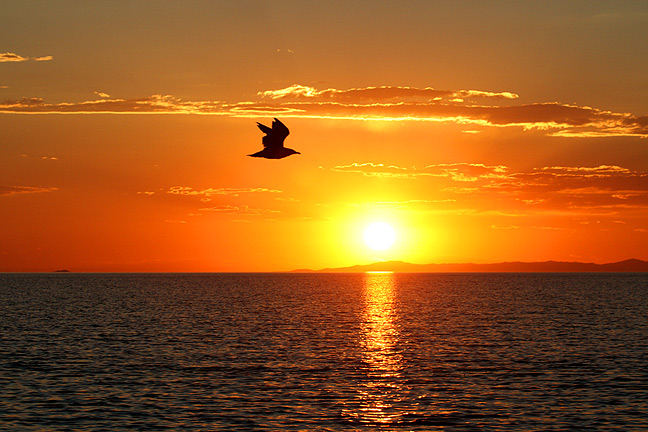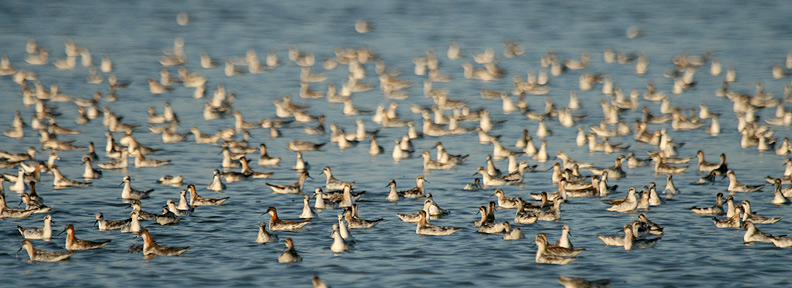The Utah Birders hosted the first official “Gullstravaganza”. 24 Utah Birders turned out and saw 6 species of gull. we’d hoped for 8 or 9, but couldn’t complete with one of the 6 being an ICELAND GULL. A life bird for many on the trip--David Wheeler ticked it off for his state leading 392nd species in Utah, and the world traveled Barbara Watkins added it to her impressive 6,000+ species life list.
February was a huge month for the Utah Birders. We officially launched our own listserv--UBIRD. The listserv is open to the general public and allowed for and open forum to discuss everything bird related. Birding is about sharing and UBIRD allows for a friendly place for Utah Birders to share information, knowledge, and sightings with other like-minded individuals. In just 10 and ½ months almost 2600 messages came through UBIRD to the birding community. I think those numbers speak a lot for what a great resource the Utah Birding community is to one another.
In March, Utah Birder Jerry Liguori saw his second field guide published with the acclaimed Hawks at a Distance. The book received positive reviews around the blogosphere and was a welcome edition to many birders libraries.
In April John James Audubon turned 226 years old--Google celebrates him with his very own Google Doodle.
I used April to try an add a few species to my yard list with some “extreme backyard birding”. From my deck I scanned the mountains about 2 miles away for migrating raptors. In turn I picked up a few closer Violet-green Swallows and White-throated Swifts that I wouldn’t have seen had I not been looking skyward. Finding new ways to see new birds for they places you spend the most time can be very rewarding.
Let just say the great fallout of Memorial Day 2011 will be a hard one to top. As a storm thrashed across most of Utah 1,000’s of migrants were forced from the sky into any kind of habitat available. Notable find included Blackpoll Warbler and Scarlet Tanager. But the show stoppers were close to 1,000 Western Tanager foraging in the Phragmites on the Provo Airport Dike. The birds were literally dripping from everywhere they could cling to. Dozens of Olive-sided Flycatchers were also present and allowed for the kind of viewing and study not normally found in Utah. Just 48 hours later I recorded less than 50 total birds in a 20 minute drive up and down the road.
For me nothing topped getting married in 2011. Sorry birds but you take a backseat to a much bigger picture in my life. And god bless my lovely wife Sam for putting up with teh amoutn of birds and birding in my life--she’s truly a trooper and I am very lucky.
What came along with getting married was 10 days in Costa Rica where I fit in a little birding every day. I saw about 240 species and recorded just over 200 lifers, including my 750th life bird--the Golden-browed Chlorophonia.
It was hot. It was down right muggy at some points as well. But high up in the mountains it was cool, and many high elevation lakes still had ice on them in July. Not a typical summer in Utah by any means. The Utah Birders threw together and impromptu end of season owling trip where we got to put faces to the names of several Utah Birders who we hadn’t met yet. The night capped off with perfect looks at a singing Flammulated Owl for the entire group.
If July was an atypical summer month in Utah, then August was the wierdest on record. Wilson’s Warblers were almost non-existent from the migrant traps they normally frequent. Rare shorebirds didn’t show up as expected--darn winged creatures, and it was still really hot! August began to shape the picture for what would be a slow and prolonged fall migration. Things never really took off like expected and lots of birds stayed later or showed up and left later than we are used to.
If there is one place I have to go birding in mid-September it’s the Salt Lake International Center. On September 17th Jeff Bilsky and I had an epic day of birding and coined a new term with “smallout”--it’s not quite a fallout, but definitely a smallout. The epic birds included a CAPE MAY WARBLER, a lovely CLAY-COLORED SPARROW, and a TENNESSEE WARBLER to make for one of the best days of birding during fall migration.
I also celebrated September by finding and photographing a Baird's Sparrow on Swede Lane in Utah County. The first of its kind photographed in Utah!
In October there were Harlequin Ducks. The last week of September one Harlequin Duck showed up at the Antelope Island Causeway. Mid-October and it was joined by a second bird. In November shockingly a 3rd bird joined the troop. Then just after Thanksgiving all 3 disappeared--and were presumed shot based off information from several hunters and birders. But October was high time for these birds and provided most Utah Birders with ample opportunities to enjoy, study, and ogle these beautiful ducks. We were truly lucky to have them and likely won’t encounter them in Utah in such a way ever again.
October also saw the launch of the comedy “The Big Year”--birdings first foray onto the big screen. You can check out one birds review of the movie here.
Harlan’s Hawks! No words sound sweeter than those two together when talking about dark buteos--at least in my opinion. In November I had the chance to watch 4 or 5 different Harlan’s that were using the fields near my office in Lehi to feed. Photographing them proved to be a difficult task and it took several weeks to finally get some beautiful shots of the beautiful birds. In the end I saw 10 species of raptor at this location, and had some great hawk watching during my lunch hour for most of the month.
The Utah Birders Blog turned one year old and announced the new guest blogging feature. It was an amazing first year and we hope it can only get better going forward.
We also had our first ever Park City Christmas Bird Count which 14 people turned out for and helped find just over 50 species on what was an awesome day of birding places that most of us never go in December.
2011 was a great year for sure. Hopefully it is a precursor to 2012 and for the Utah Birders and the birding community some more great things are on the way. I guess you’ll just have to stay tuned to see what happens next!
Good Birding
Tim
Labels: 2011, commentary, review
